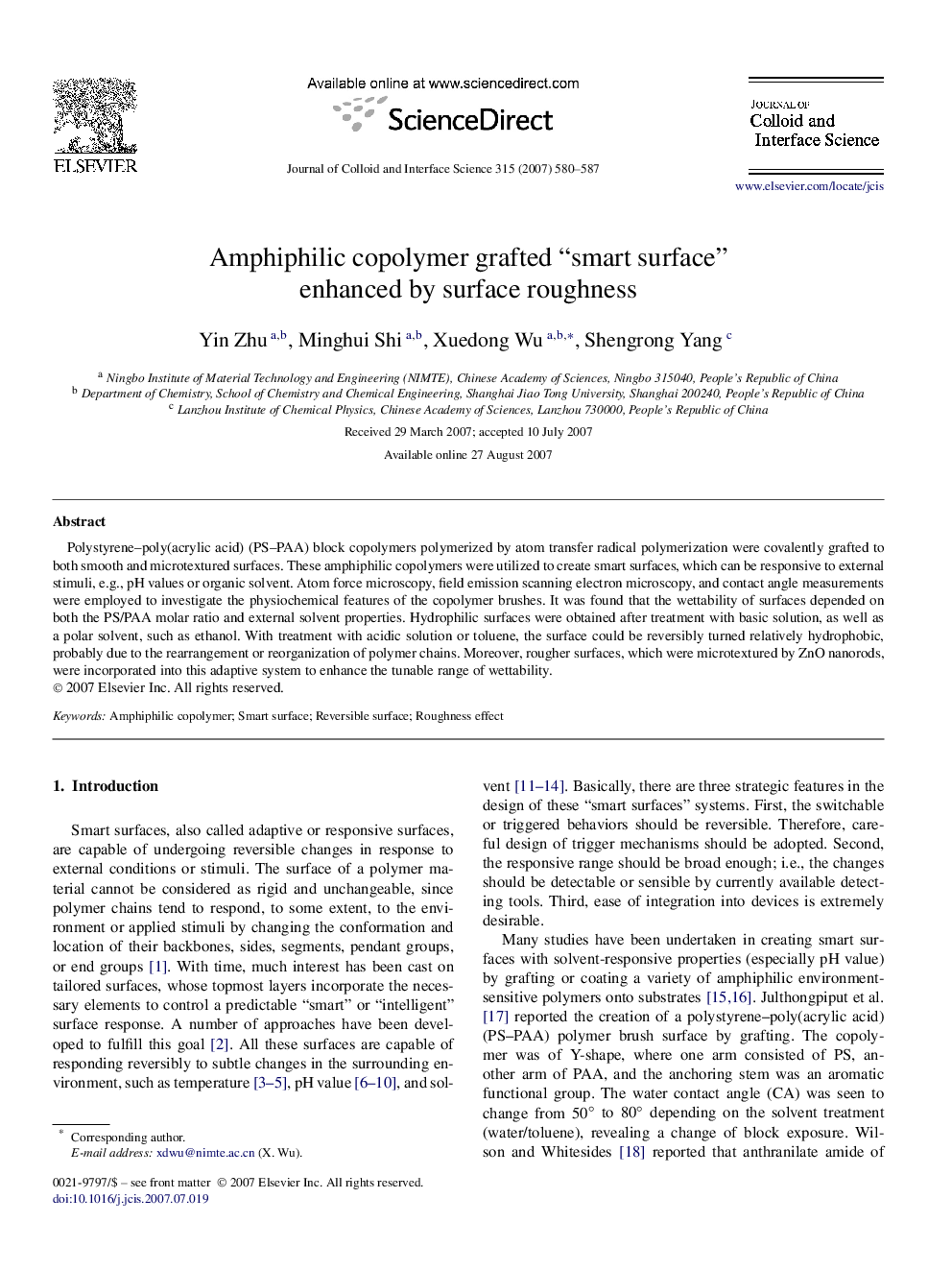| Article ID | Journal | Published Year | Pages | File Type |
|---|---|---|---|---|
| 612171 | Journal of Colloid and Interface Science | 2007 | 8 Pages |
Polystyrene–poly(acrylic acid) (PS–PAA) block copolymers polymerized by atom transfer radical polymerization were covalently grafted to both smooth and microtextured surfaces. These amphiphilic copolymers were utilized to create smart surfaces, which can be responsive to external stimuli, e.g., pH values or organic solvent. Atom force microscopy, field emission scanning electron microscopy, and contact angle measurements were employed to investigate the physiochemical features of the copolymer brushes. It was found that the wettability of surfaces depended on both the PS/PAA molar ratio and external solvent properties. Hydrophilic surfaces were obtained after treatment with basic solution, as well as a polar solvent, such as ethanol. With treatment with acidic solution or toluene, the surface could be reversibly turned relatively hydrophobic, probably due to the rearrangement or reorganization of polymer chains. Moreover, rougher surfaces, which were microtextured by ZnO nanorods, were incorporated into this adaptive system to enhance the tunable range of wettability.
Graphical abstractWe modified surfaces by PS–PAA block copolymer brushes to prepare smart surfaces, the wettability of which can be reversibly switched with external solvents stimulation. Moreover, rougher surface microtextured by ZnO nanorods, was incorporated into this adaptive system to enhance the tunable range of wettability.Figure optionsDownload full-size imageDownload as PowerPoint slide
